Corridor design in a private house
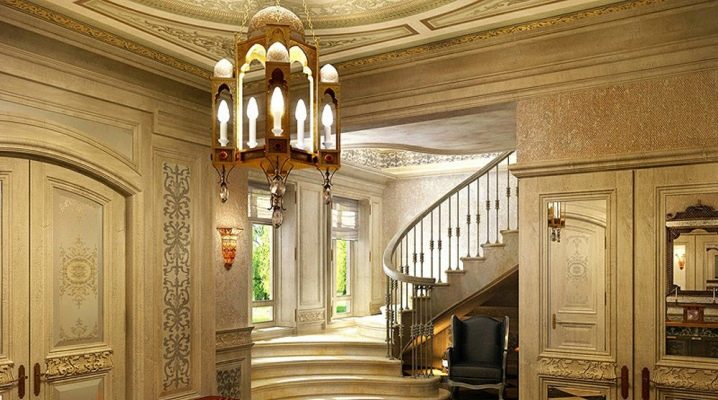
The design of the corridor in a private house is very important for the formation of a complete image of your home. Firstly, the entrance hall is part of the corridor, it “sets the mood” for the entire interior. Secondly, the corridor itself stylistically often connects the first and second floors. Thirdly, there is a staircase in the corridor, the design of which deserves special attention. In other words, it is impossible to underestimate this room during renovation.
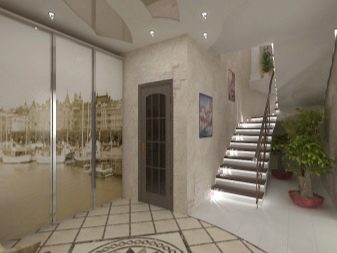
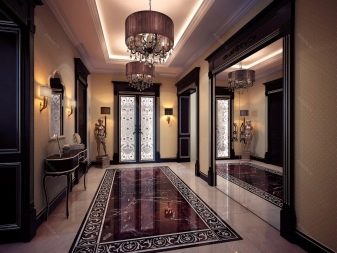
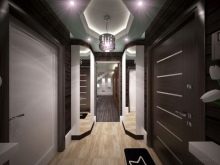

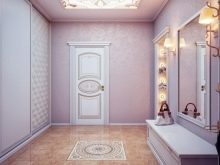
Interior design features
A corridor in a private house is an opportunity for the owners to apply various architectural and design techniques that are not suitable for a one-level apartment:
- With sufficiently high ceilings, steps can be made to delimit zones. This option is well suited for rooms with a complex configuration.
- Creative decoration will turn the staircase into the center of attraction for guests' attention. You can finish stairs and railings with almost any material, in accordance with the style chosen.
- In a large niche, you can place a bookcase or wardrobe, a sofa or a table decorated with a vase of flowers.
- The spacious corridor will well accommodate arched openings. Do not forget that the shape of the opening can be any: round, semicircular, wavy, zigzag. It is also possible to supplement the arch with shelves or decorate with stained-glass windows.
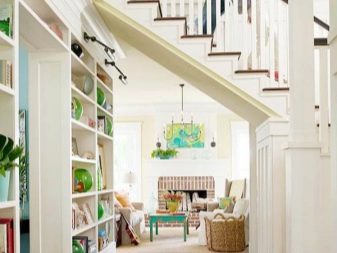
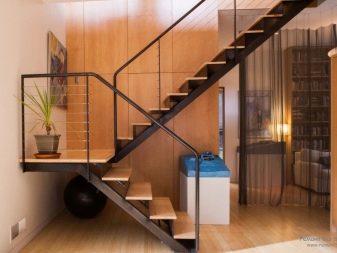
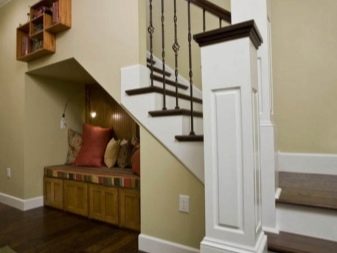
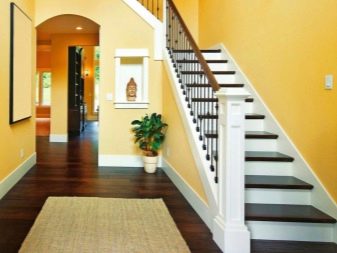
- "Play" with the stairs - the space located under it can be turned into a rack or wardrobe.
- Decide on the furniture: whether it will be a separate wardrobe, chest of drawers, a bench with a bedside table, a bench or a finished hallway. Keep in mind that a chest of drawers at the very end of the corridor will visually add volume to the room. Compositions from paintings or photographs also work.
- In matters of lighting, give preference to spotlights mounted in the ceiling. It is also a good solution to organize a multi-level lighting system, for example, a pair of chandeliers and several wall lamps.
- Use paintings, mirrors, photographs and figurines as accessories. But do not overload the space with furniture and other interior items - the path will be a few catchy details.




- Do not forget that the width of the passage must be at least 90 centimeters. Under such conditions, you can safely move around it. To visually expand a narrow room, use a diagonal or transverse installation.
- The division of space into separate sectors is most often carried out by using various materials for floor or wall covering. However, all of them should be combined with each other, that on the first, that on the second floor, and the stairs should be a connecting link between them.
Read more in the video.
- Cold vestibule - the space between the front door and the residential part of the house. In principle, it can be used as a hallway and place a wardrobe or a coat hanger, a shoe rack and a bench here. Naturally, in this case, the room must be insulated. You can also convert the vestibule into a utility room for storing any household or outdoor items: shovels, hoses, carts, bicycles, children's toys. In wooden houses, the vestibule is often equipped with windows and has a large area, so a covered veranda can be organized here.
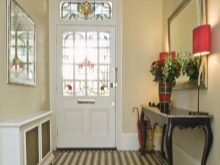
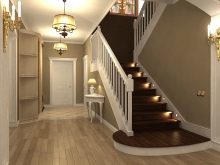
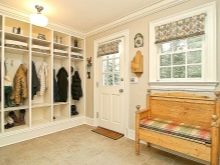
DIY finishing
In order for the room to look solid, it is necessary to approach its design with responsibility: the decoration must be combined with the selected furniture. In addition, a beautiful corridor should also fit into the overall design of the house. If you want to make it neutral, then you should arrange it in light colors. Whitewash the ceiling and cover the floor with something practical: laminate, linoleum or parquet. Walls can be finished with fine-grained plaster, wood paneling or wallpaper without prints and three-dimensional patterns.
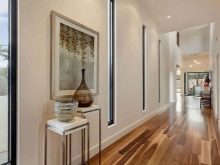
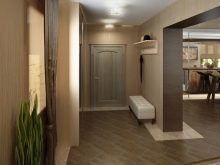
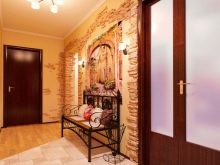
If you need to equip the corridor with bright and eye-catching material, then use more interesting options. For walls, use blended liquid wallpaper or embossed vinyl wallpaper. Choose a suspended or suspended ceiling; if you have the required area, you can build a multi-tiered structure. Decorate the floor with tiles or panels that imitate stone.
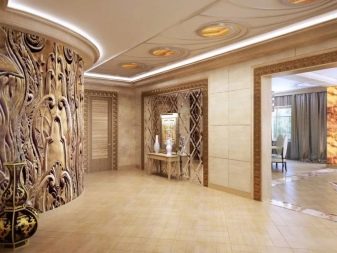
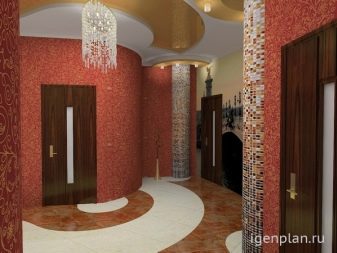

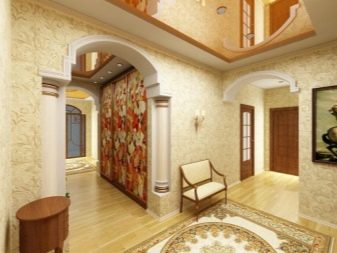
Walls
The walls of the corridor in a private house are exposed to heavy loads: they are affected by dust, dirt, moisture, and mechanical damage is also possible. Therefore, when choosing a material for decoration, think about how you will clean it, and how long it can serve you.
It is not recommended to use expensive textile and ordinary paper wallpapers - they are not too wear-resistant. However, if you settled on this view, keep in mind that vertical stripes can increase the height of the ceiling, and horizontal stripes can lengthen the room. Be careful with large drawings or photographs. Firstly, to see if the area of the room allows, and, secondly, whether this element looks too pretentious. Also, be careful with horizontal corridor zoning.
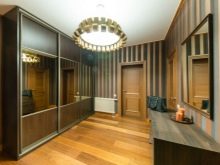
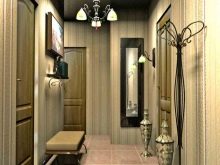
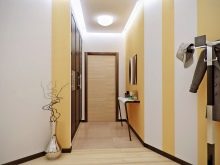
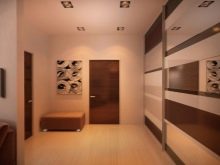
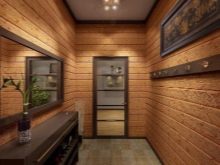

Of course, it is better to buy a durable and preferably washable material. Experts recommend:
- Vinyl wallpaperswho are washed. They have a wide palette of shades and are easy to stick.
- The liquid wallpaper. Usually, after varnishing, they can be easily cleaned with a vacuum cleaner or a damp cloth. With their help, it is very convenient to design arches, niches and other complex surfaces. In addition, liquid wallpaper itself is a very interesting and eye-catching material.
- Dye - the easiest way, suitable exclusively for smooth walls.
- Decorative plaster - sufficiently durable material. Easy to apply, easy to clean.
- Furniture panels made of MDF and PVC - with their help, the walls are formed very quickly, but effectively. There are three types: sheet, square tile and type-setting rack panels. With their help, an apron is often laid out from the floor to the middle of the wall, and the remaining space is covered with paint or pasted over with moisture-resistant wallpaper.
- Lining. If you decide to sheathe the walls with clapboard, then reduce the level of noise coming from the street, and provide yourself with eco-friendly decor. Decorating the corridor with decorative Euro lining will add coziness and comfort to the room.
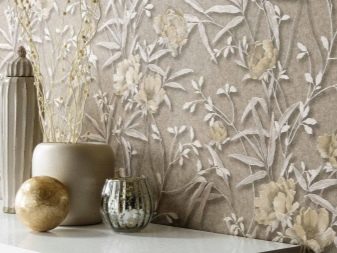
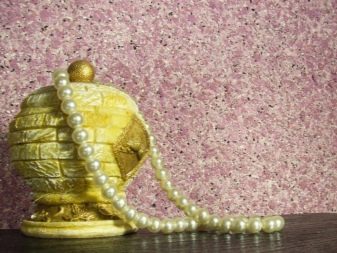


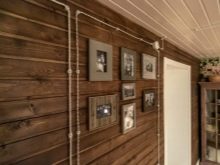
Floor
For the floor, you should choose a durable, resistant material that is easy to care for:
- Linoleum Is one of the most popular options. It is cheap and very easy to care for, but some models simply cannot withstand the constant impact of heels and stilettos. You can place it in the back of the corridor, but the entrance area will require something different.
- Choosing as flooring laminate, make sure that it is moisture resistant and as durable as possible. It is recommended to treat the joints with a moisture resistant grout.
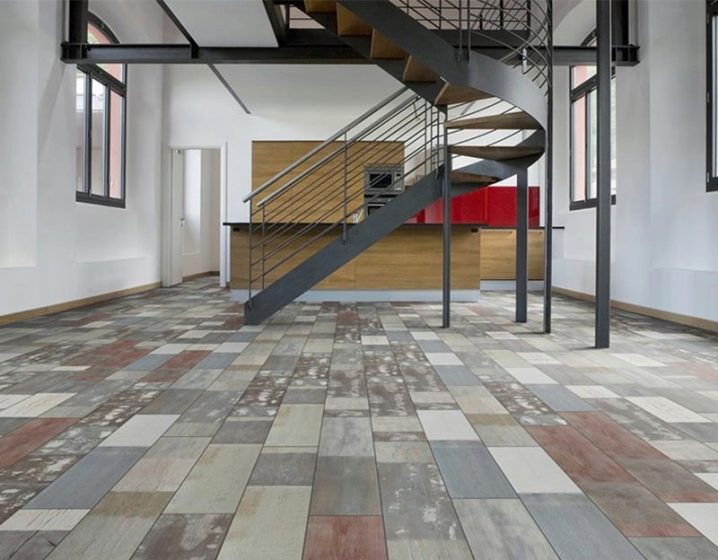
- Tile - a reliable and convenient design option. If you want ceramic tiles, then choose porcelain stoneware, which is stronger and more reliable than usual and is protected from slipping. However, it is stone tiles that are considered the most reliable and durable coating, albeit with a high cost.
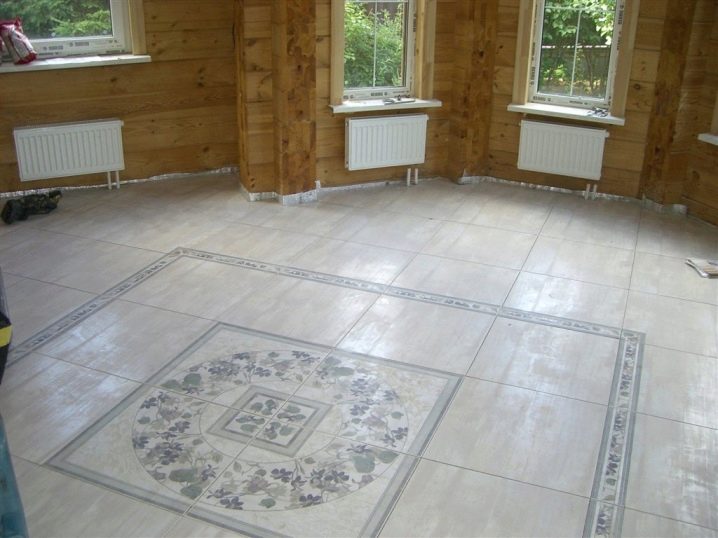
- Having decided combine multiple materials, arrange them as follows: at the front door - tiles, and on the remaining sections - laminate or linoleum.

Ceiling
Ceiling decoration in the corridor is carried out in the same way as in other rooms and does not stand out in anything special. Rely on the choice to your liking. It is also worth remembering that there are three options: making a suspended ceiling (made of plastic panels or drywall), making a stretch ceiling (giving a flat and smooth surface), or choosing a finishing method. Finishing is carried out by painting, whitewashing, wallpapering, applying plaster or tiles.
It is quite possible to repair a corridor in a private house on your own.
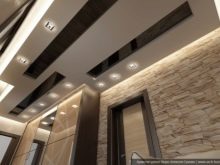
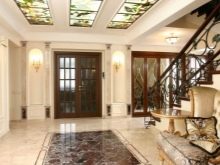
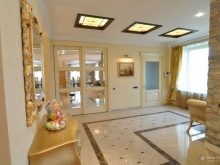
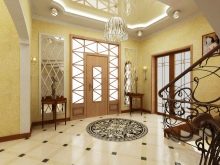
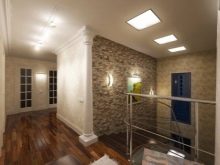

Simple design solutions
There is an opinion that the corridor with the entrance hall should be decorated in the same style as the rest of the rooms. Nevertheless, the "technical", non-residential status of these spaces allows you to add a bit of experiment and original solutions. But in any case, the chosen colors should organically fit into the design of the house.
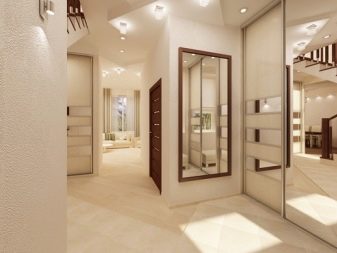
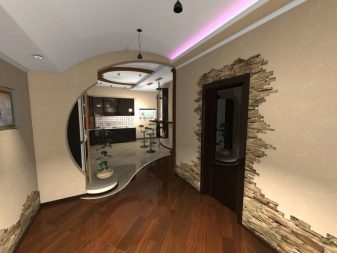

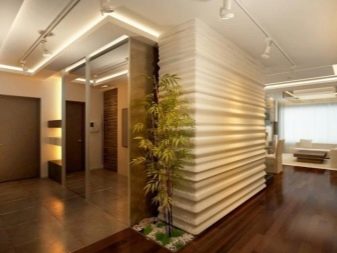
Interesting options
- When decorating a classic interior, you can use a carpet in a noble shade as an element of decor.
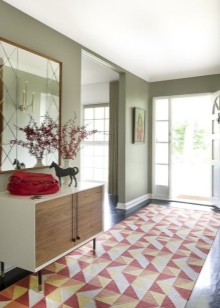
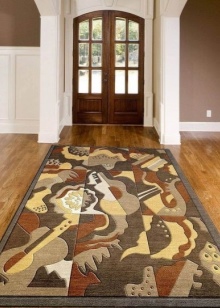
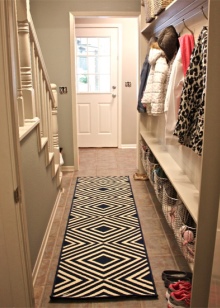
- A long, elongated corridor can be visually shortened if the far wall is painted in rich, bright or dark colors, and the sides are left "light" and light.

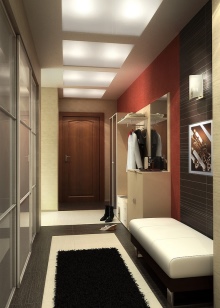
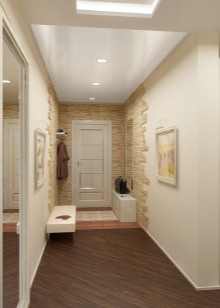
- Corridors in the shape of a semicircle are designed in muted tones, as luscious tones look too intrusive.
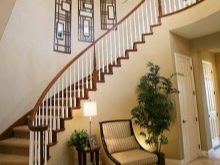
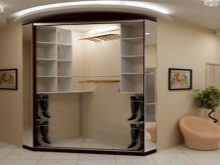

- If the room has a complex shape (the letter "T", the letter "P" or a zigzag), then it is worth fencing off a part of the common corridor and creating separate, independent passages. As a rule, they are designed in contrasting colors.

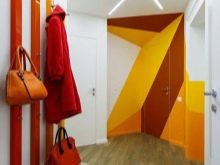
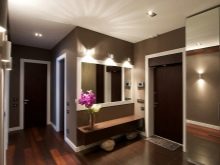
- If your house has a spacious square-shaped corridor, then it can be turned into a hall in the English or classical style. Use light colors, stucco decoration and sconces in the form of candlesticks.
- In a large corridor, you can place a small seating area: a sofa or a couple of armchairs, a coffee table, floor lamps and decorative items. Also, a reading area and even a bar would fit well here.
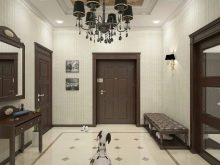
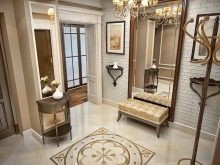

- Narrow console tables do not take up much space, but they fulfill a double function: aesthetic and utilitarian, acting as stands for objects. You can also diversify the corridor with shelves with books and decor. Choose from pendant, floating or recessed models. They are available in different sizes and can be stacked one above the other.
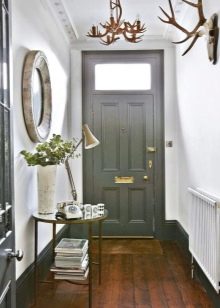
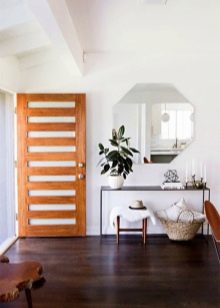
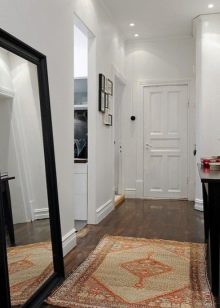
- An accent with the help of a bright carpet, stucco on the ceiling or patterns on the walls will make the corridor more interesting without buying pretentious furniture.


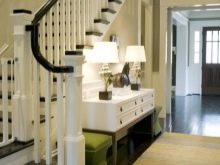
- A large entrance hall and a wide corridor will allow you to take unexpected steps: install a sink to be able to wash your hands after gardening or organize a workspace with a desk.
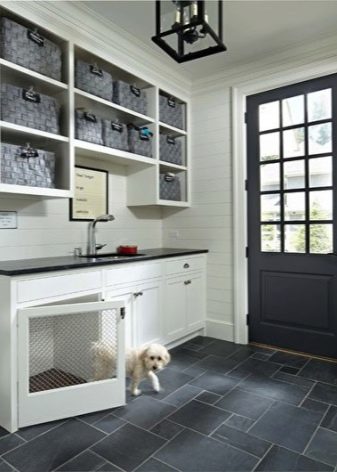
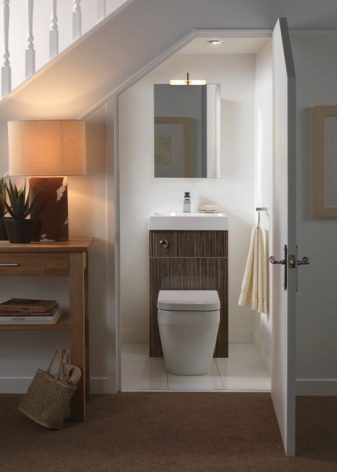
- One of the most popular corridor design tricks is playing on contrasts. For example, you can choose a light background and bright accents, dark walls and light furniture, or a black and white space.
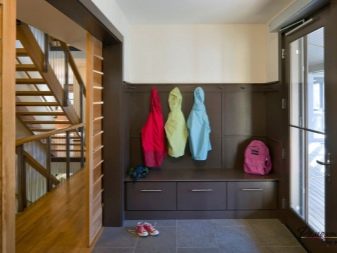
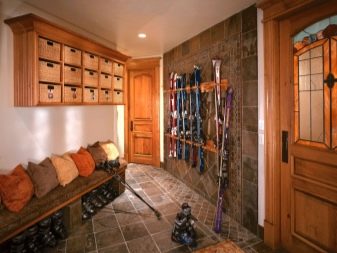













The comment was sent successfully.